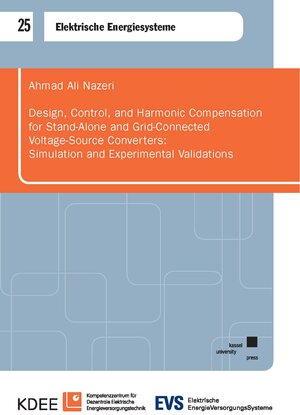Design, Control, and Harmonic Compensation for Stand-Alone and Grid-Connected Voltage-Source Converters: Simulation and Experimental Validations
von Ahmad Ali NazeriVoltage source converters (VSCs), among other power converters, play a crucial role in supplying power to both local loads and the grid at the PCC. During standalone operation, VSCs ensure stable power for loads by regulating the output voltage. In grid-connected mode, the regulation shifts to controlling output current, such as converter side current (CSC) or grid side current (GSC), to inject sinusoidal current into the electrical grid. The nonlinear characteristics of the loads connected to the power converters result in significantly distorted output voltages. This capability is crucial for applications such as uninterruptible power supply (UPS), emphasizing the importance of precise output voltage control. Similarly, in grid-connected mode, the CSC or the GSC is regulated to inject low THD current. The aim is to mitigate grid current harmonics arising from dead time and distorted grid voltages. Therefore, the harmonic mitigation of the grid current control is investigated in this work. This work presents the implementation of the proportional resonant plus multi-resonant (PR-MR) and practical proportional resonant plus multi-resonant (PMR-MR) harmonic controllers in the voltage and current control loops to mitigate the high-order harmonic currents.






